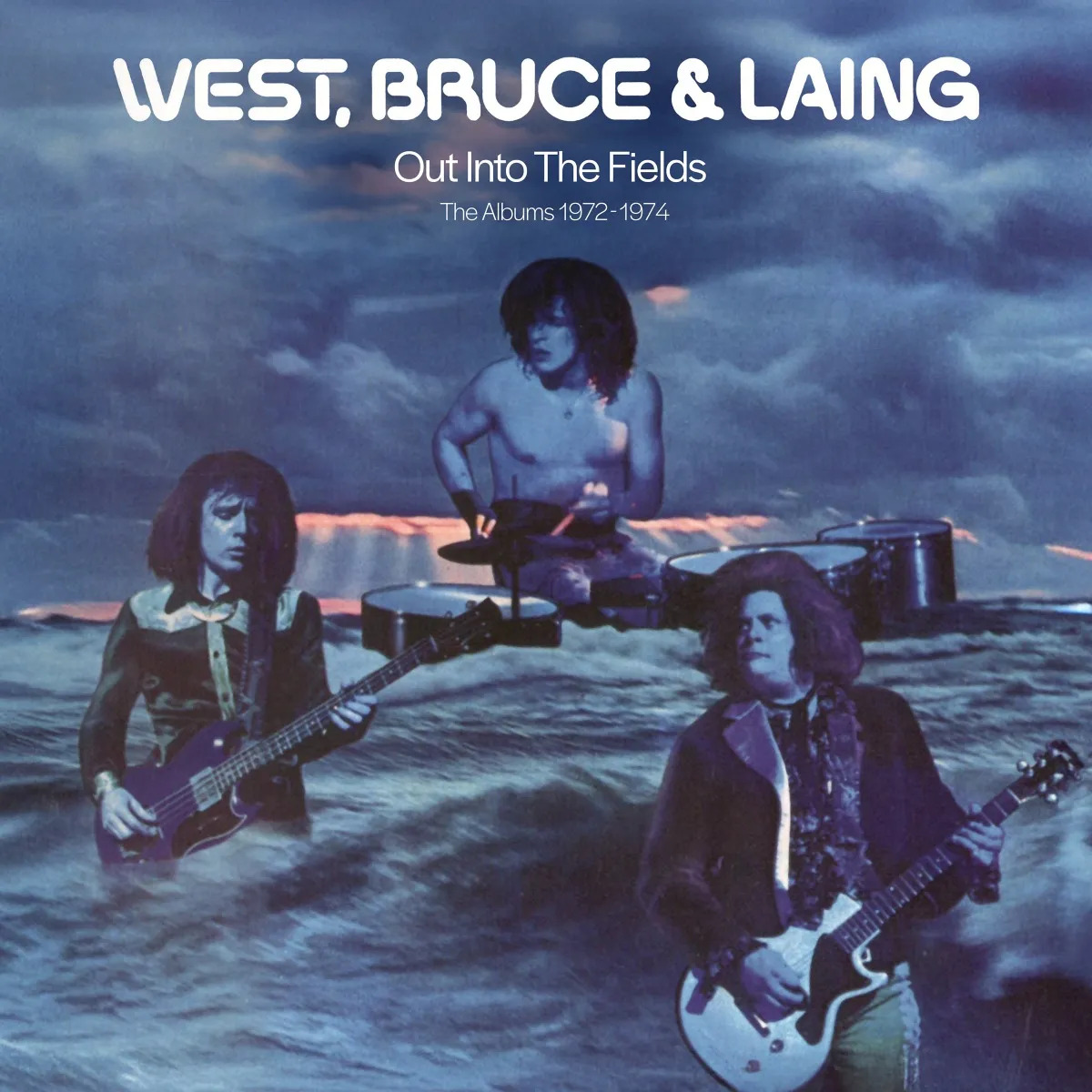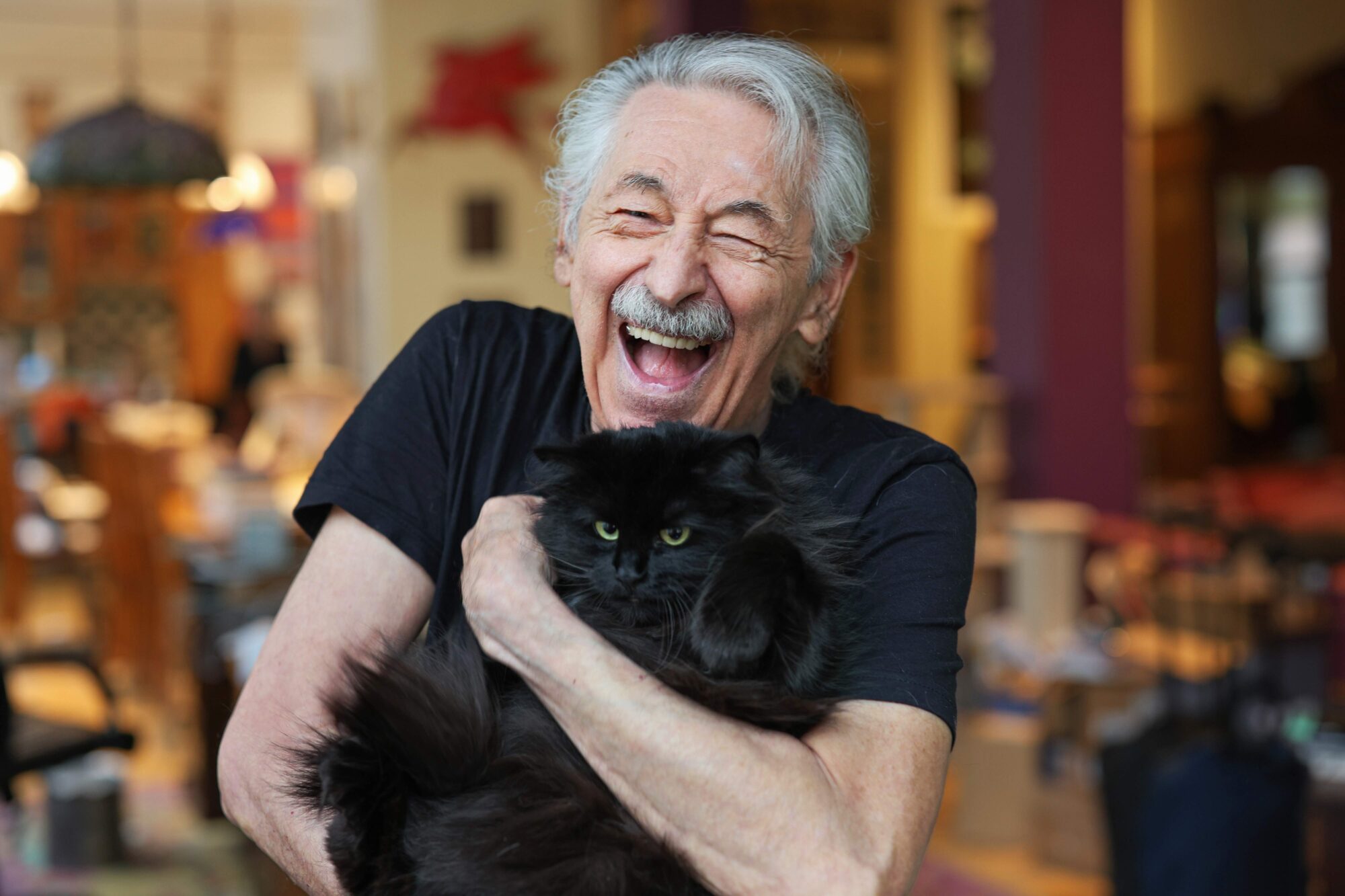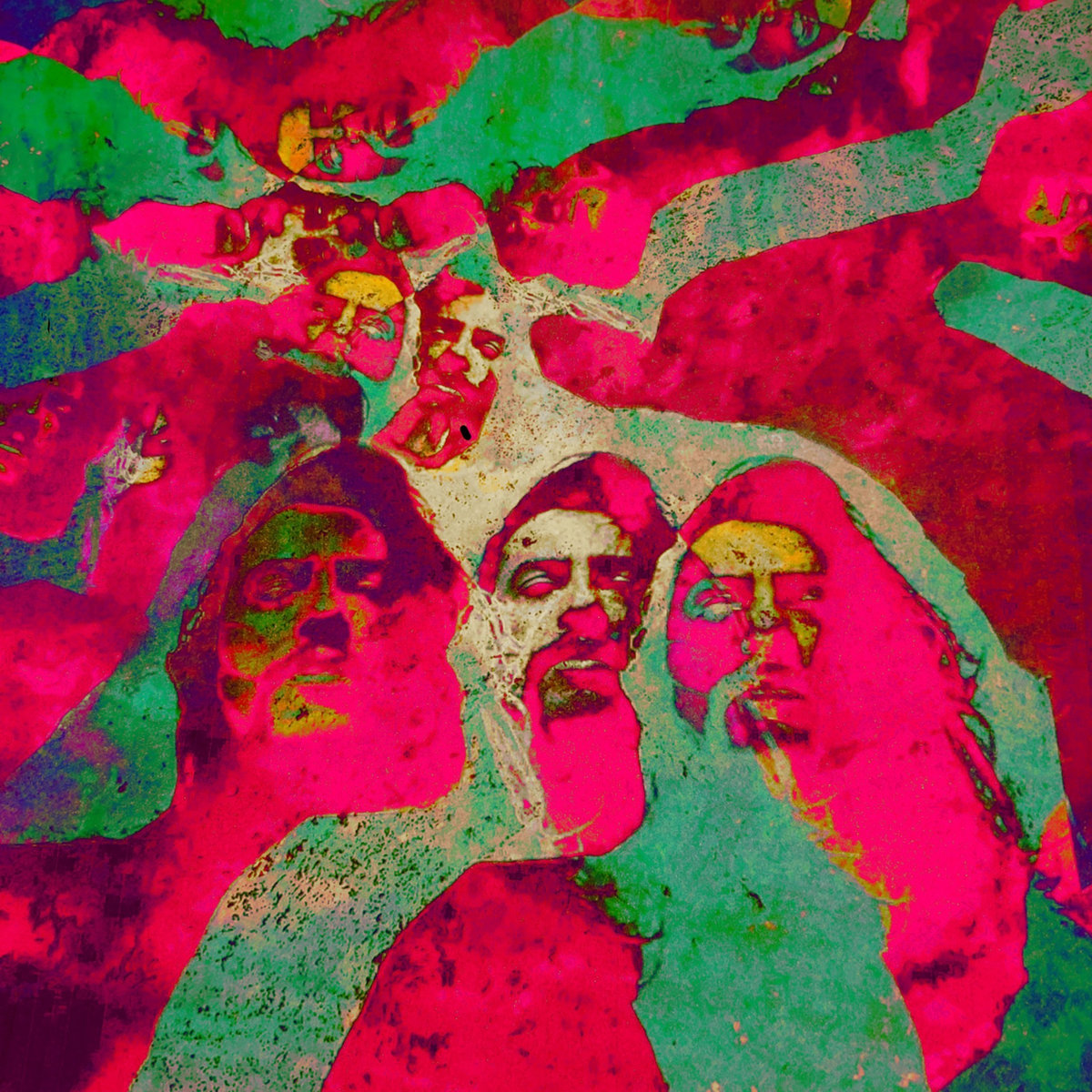Stone Angel | Interview
The Stone Angel story probably begins in December 1972. Guitarists Ken Saul and Paul Corrick were rehearsing for a spot at the Great Yarmouth Folk Club Christmas party, but all they could come up with was a guitar duet version of ‘God Rest You Merry, Gentlemen’. They invited singer Jill Child to join them, and worked on a couple of recently composed songs based on local legends, ‘Sanctuary Stone’ and ‘The Skater’.
That first performance was so well received that the trio decided to continue, the following two years seeing them perform at clubs, concerts and festivals throughout East Anglia and occasionally further afield, while still doing the resident slot at their local club.
During the summer of 1973 a demo recording of some of their songs was made, on which Midwinter were joined by Dik Cadbury (of ‘Decameron’ and ‘Steve Hackett Band’ fame) on bass, and Mick Burroughes on percussion. This was never released at the time, and in fact the master tapes remained in a box in Ken Saul’s attic until they finally were issued by Kissing Spell in 1993 as the CD ‘The Waters of Sweet Sorrow’.
Midwinter came to an end with Jill’s departure to college, their farewell concert taking place back at the Yarmouth Folk Club on September 11th 1974. Some of their songs lived on, however, as a few months later Paul and Ken formed a new band, again including fellow musicians from the Yarmouth club. This new band had something of a rockier, more gothic, edge and a decidedly experimental approach to folk music: Stone Angel was born!
“Many of the songs were based on local stories and legends”
Interview with guitarist Ken Saul
Would you like to talk a bit about your background? Where and when did you grow up? Was music a big part of your family life?
Ken Saul: I was born and brought up in the village of Caister-on-sea, Norfolk, England. Growing up in the nineteen-fifties, many of my family members were musical, so I was always surrounded by music. My mother sang in the choir at the local Methodist church, one of my aunts played the church organ, and another aunt played the violin.
I was used to singing from a very early age, again, largely in the church setting, but I also remember being stood on a chair to sing ‘Que Sera, Sera’ to the next-door neighbours! In the late fifties/early sixties my older brother was always listening to Radio Luxembourg, so that was when I began to pick up a bit more on the pop culture of the day. Some of my brother’s friends had also started playing in a skiffle group, which I remember seeing and hearing in the church hall.
When did you begin playing music? What was your first instrument? Who were your major influences?
My sister played the piano, and she tried to teach me too, but I wasn’t very good. Then, at age 14, I picked up the guitar and it felt quite natural for me to play.
Apart from a plastic toy banjo, my first guitar was actually home-made, largely put together by my brother. My first “proper” guitar was a ‘cello-style Rosetti, bought from a school-friend for £5.
Probably the earliest influence on my attempts at playing the guitar was Hank Marvin and the Shadows. I joined a group with friends at school, initially doing cover versions of early Beatles and Rolling Stones material, but eventually moving on to more rock music, like Jimi Hendrix and Eric Clapton. I had also started to listen to folk music such as Simon & Garfunkel and, especially, Pentangle, and other stuff like The Moody Blues and Jethro Tull. This continued when I attended art college and started going along to the local folk clubs.
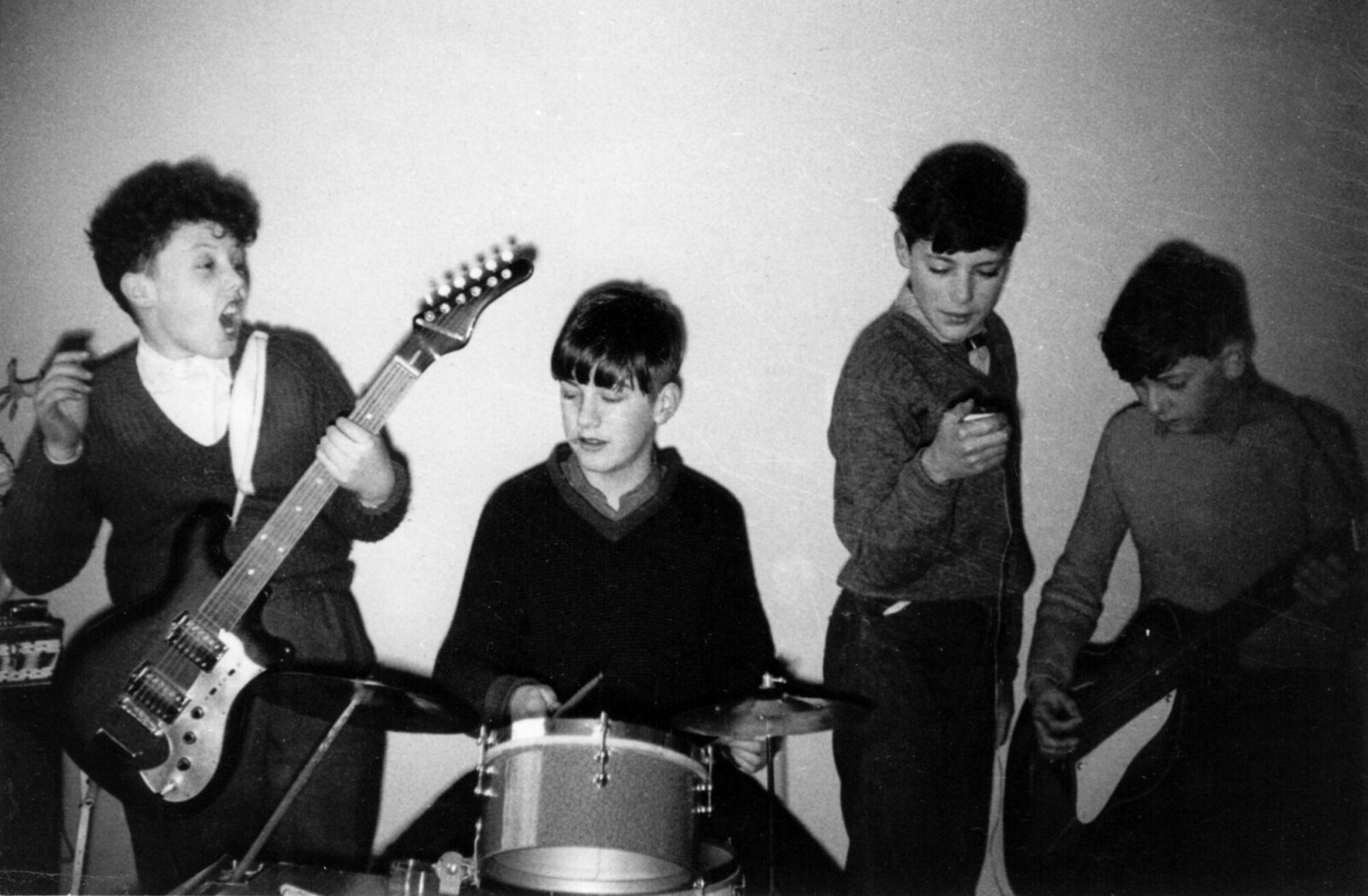
When did you decide that you wanted to start writing and performing your own music? What brought that about for you?
Quite early on I tried writing instrumentals, trying to mimic the Shadows. My efforts probably weren’t very good. An older boy, with a bit more guitar experience, told me I should learn to play other people’s music properly first. To be honest, I was a bit annoyed by the comment, so I ignored that!
I wrote one or two pieces for the school-days band, but later also started composing more folky acoustic singer-songwriter stuff, influenced (as I mentioned above) by acts like Simon & Garfunkel.
You formed Midwinter in 1972. How did you meet Paul Corrick and Jill Child?
I already knew them both through knowing their brothers from school and art college respectively. I got to know them both more when I was involved with helping to organise the local folk club in Great Yarmouth. Fellow guitarist Paul and I were planning to perform something at the club’s Christmas party, but all we could come up with was a guitar duet version of ‘God Rest You Merry, Gentlemen’. We invited singer Jill Child to join us, and the performance was so well-received that we decided to carry on playing together – thus Midwinter was born!
What can you tell us about Midwinter gigs?
For the next couple of years we did the resident slot at the folk club and also played at other folk clubs and festivals. We performed in all kinds of different venues too, including village fetes, holiday camps, and so on. Most of our gigs were in East Anglia, but we occasionally travelled further afield.
When did Dik Cadbury and Mick Burroughes join the band? You wrote an album of original material. Where did you record the songs that appear on the 1973 demo (later officially released).
The Midwinter recording was made at a little local studio in Great Yarmouth. It was recorded originally purely as a promotional thing to use to try and get more bookings. I suppose it was also partly to give ourselves something concrete to remind us of what we did. It was eventually released on CD by Kissing Spell in 1993 – twenty years after the recording! Luckily, I had kept the original master tapes.
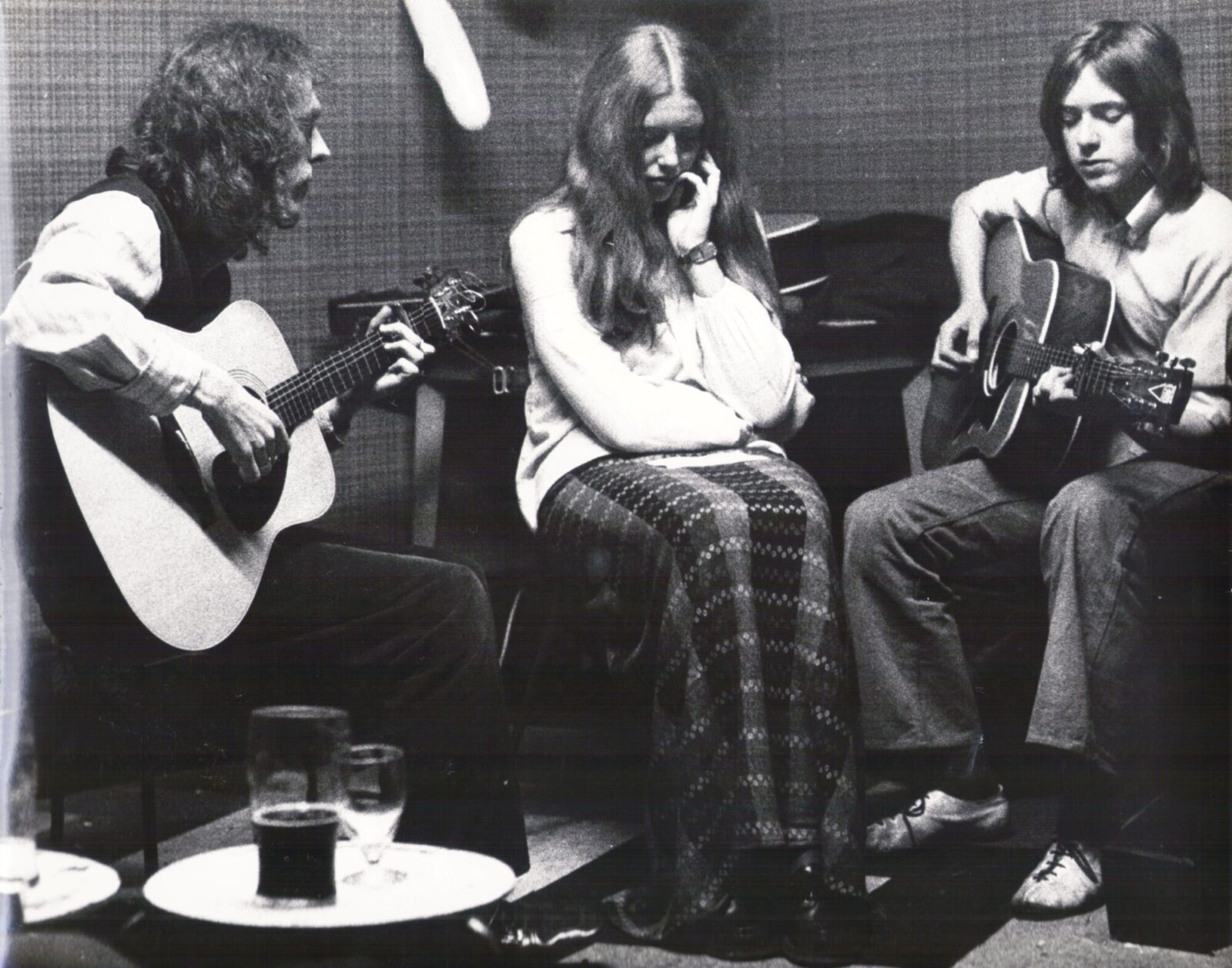
The material was all stuff we were currently performing, and we were able to invite Mick Burroughes and Dik Cadbury to help us out on some tracks with percussion and bass respectively. They were never part of the actual band, as such – just additional musicians for the recording. Of course, Dik later found fame with Decameron and Steve Hackett’s band, and Mick joined us in Stone Angel.
“I was also becoming more and more interested in early music”
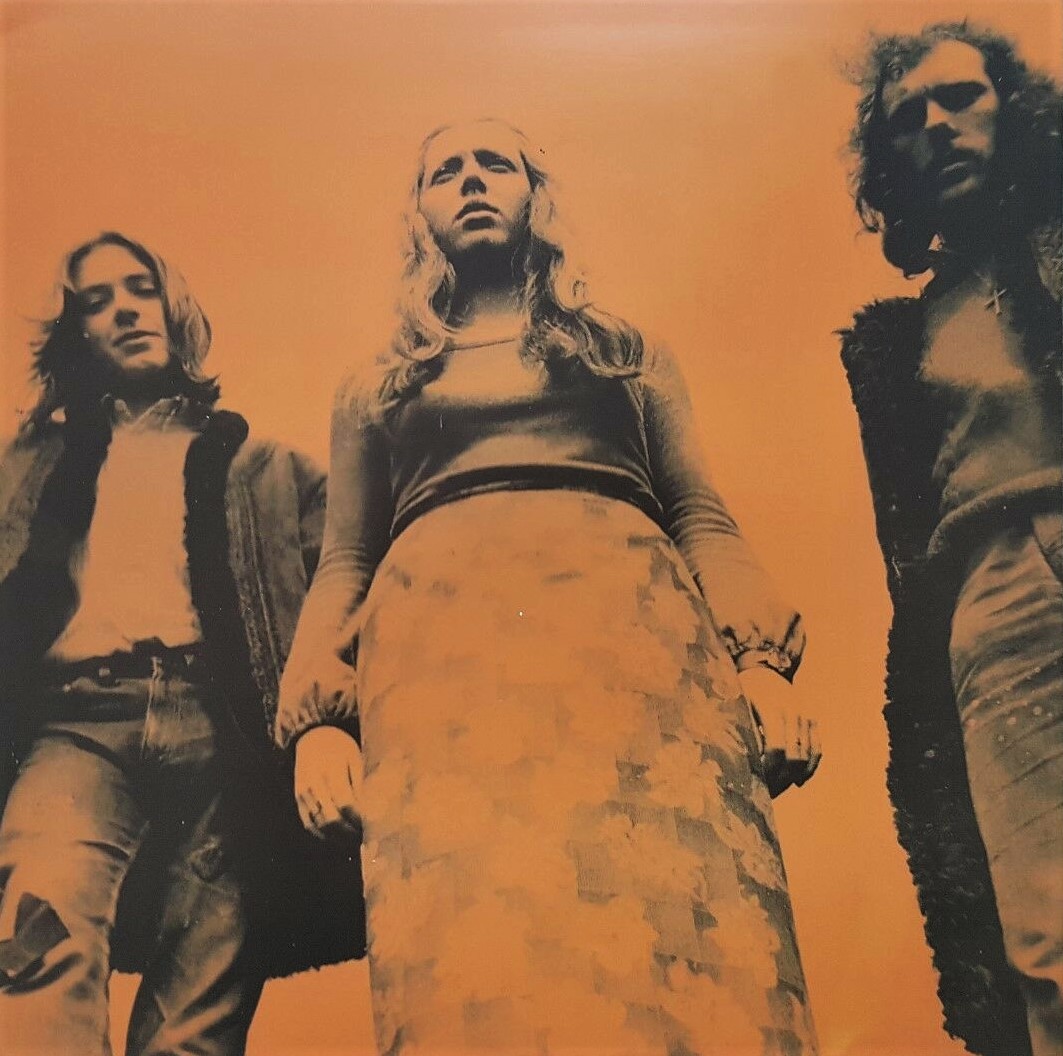
Would you share your insight on the albums’ tracks?
As I mentioned, all the songs on the recording were things we were then currently performing live, so the album is a very accurate mirror of Midwinter material. It was a mixture of traditional folk songs, for example, ‘All Things are Quite Silent’, and our own compositions. Many of the latter were based on local stories and legends, some of which I knew through the recounting of them by older members of my family – so definitely local roots. Good examples would be ‘The Skater’ and ‘Sanctuary Stone’.
What influenced the band’s sound?
As an acoustic guitarist, I was greatly influenced by John Renbourn and Bert Jansch. Consequently, their work with Pentangle coloured my approach too. I was also becoming more and more interested in early music, while the element of local stories and legends dates from earlier family interests. Paul’s guitar work developed from more of a rock background.
Can you elaborate the formation of Stone Angel?
When Jill left for college in September 1974, Paul and I formed Stone Angel with other friends from the Yarmouth folk club. I think that we felt that it was too good a thing to let go, and we’d already thought about future possibilities once we knew that Jill would be moving on. Mick Burroughes had played for us on the Midwinter recording, and was also in a blues/rock combo with Paul. Joan had arrived on the scene and was now my girlfriend, and Dave Lambert was having violin lessons with my aunt and jamming with anyone else who would let him!
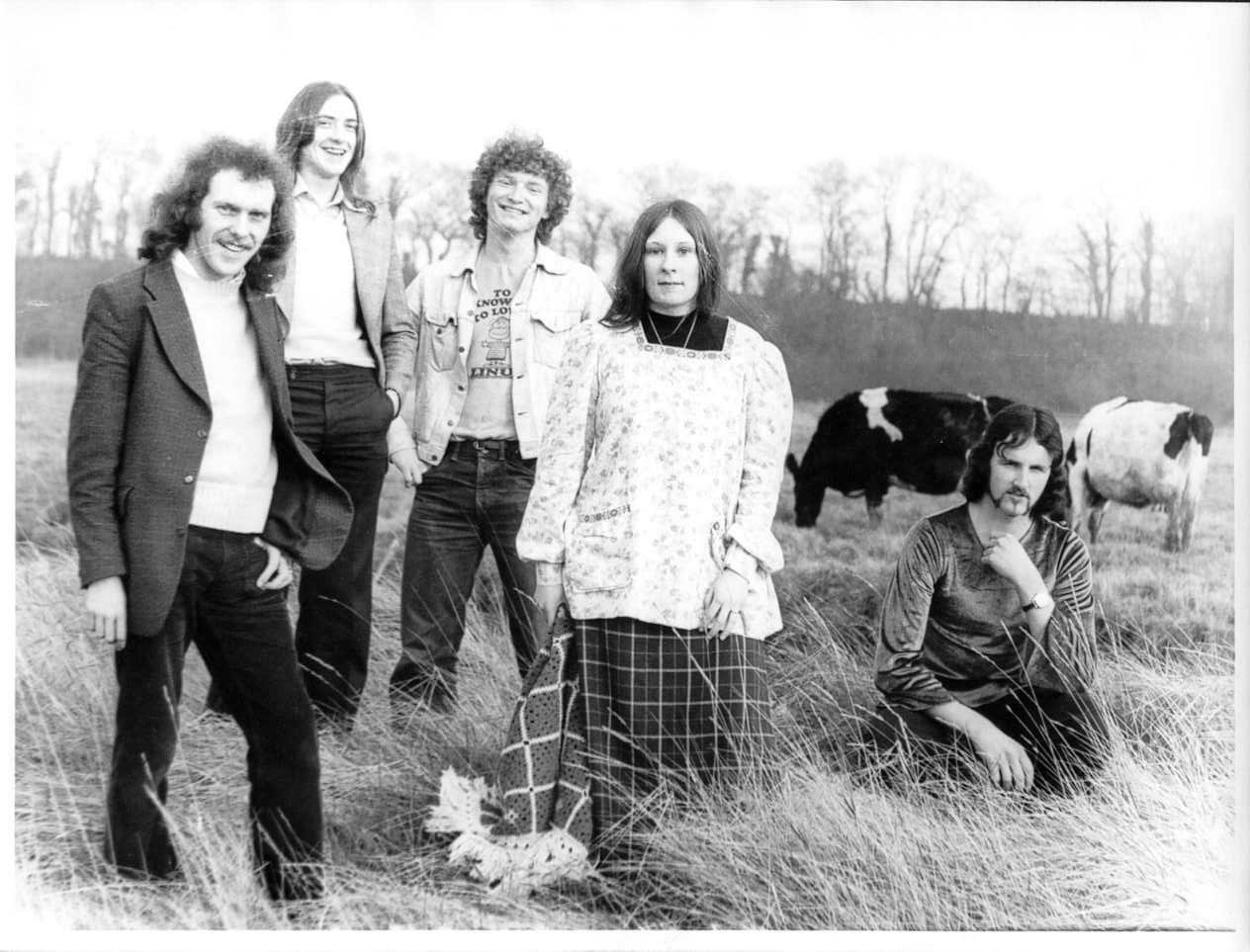
We carried over a few of the Midwinter songs, like ‘The Skater’, for example (which we still sometimes include in our live sets now). We’d also been performing ‘The Black Dog’ already too. The new band also gave us the impetus to start writing more new material.
“The original plan was to have five hundred copies pressed, but for various reasons, only three hundred and fifty were ever actually produced.”
In February 1975 you recorded self-released ‘Stone Angel’. What’s the story behind the album? Where did you record it? Who was the producer? How many copies were pressed?
Stone Angel were performing at all these different gigs, but almost exclusively in our local area of East Anglia. Many people in our audiences kept asking if we’d made a record, but we didn’t have any kind of deal, so we decided to finance a recording ourselves. It was done fairly basically in the music studio of a college in Norwich. It was recorded and produced by our friend Eddy Green, who had sometimes deputized as part of the band, but unfortunately it was in the final record pressings that we were disappointed with the quality of the sound.
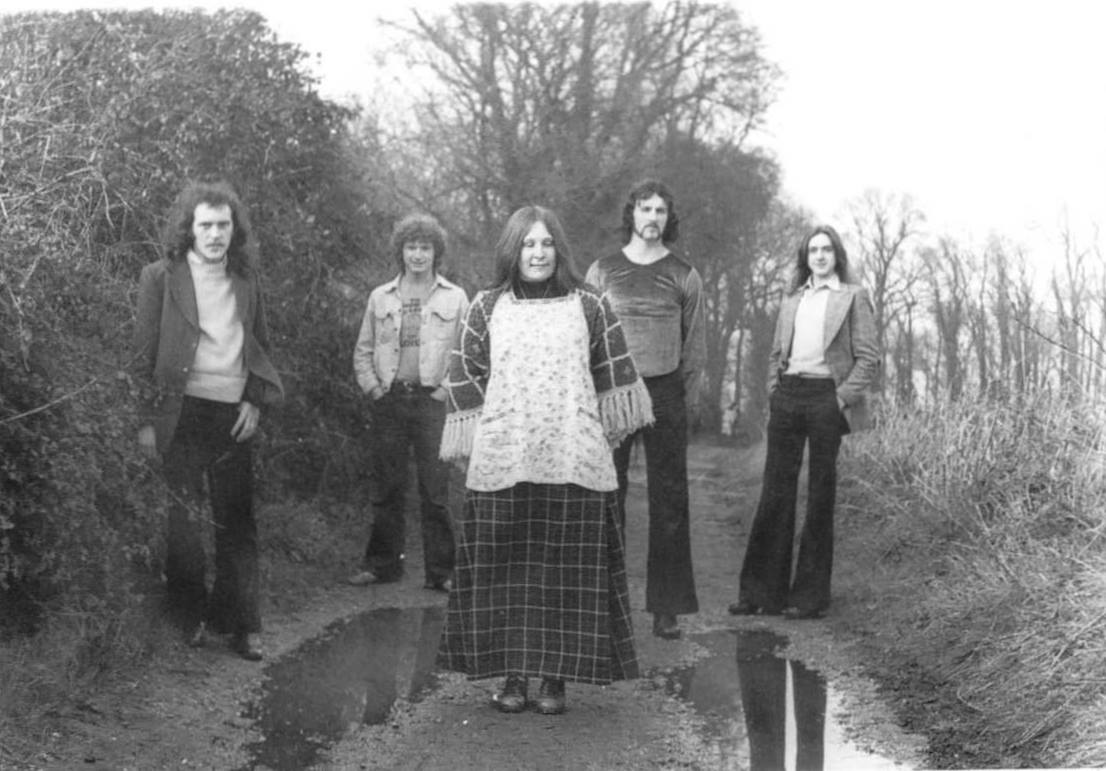
The original plan was to have five hundred copies pressed, but for various reasons, only three hundred and fifty were ever actually produced. Despite the poor sound, we managed to sell about two hundred albums at our gigs. I don’t think at the time that we ever thought that our music was particularly special – it was just what we enjoyed playing.
What can you tell us about the cover artwork?
The saving grace for us was the superb illustration of the stone angel by another friend, the artist Mel Harris. His original drawing was actually displayed in the Royal Academy. In fact, part of our sales pitch at gigs was to offer prints (that is, the LP cover sleeves) of this famous picture for a couple of quid, or whatever it was, and with every print, we’d give away a free vinyl LP!
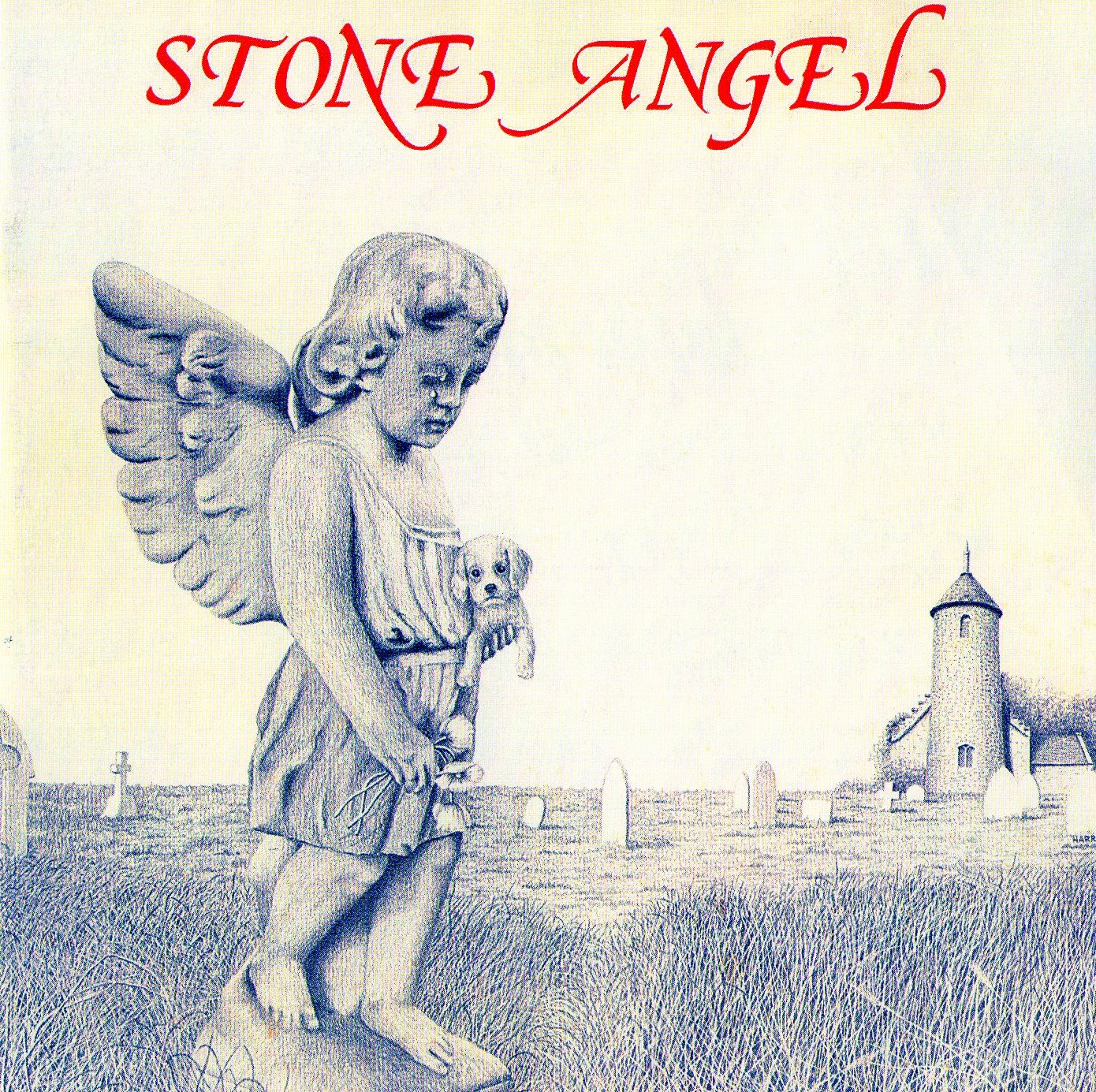
To pre-empt the question, the actual stone angel statue does exist. It is in the churchyard in the village of Trowse, just outside Norwich. Incidentally, the church tower in the background of the original picture isn’t Trowse church!
Would you share your insight on the albums’ tracks? Was there a certain concept behind the album?
No, there wasn’t really a concept behind the album, as such. As with the earlier Midwinter recording, it was made up of the material that we were performing live at that time. As I mentioned earlier, we’d carried over a few of the Midwinter songs, like ‘The Skater’ and ‘The Black Dog’. As well as traditional folk and early music leanings, the other members of Stone Angel all brought their own influences to the band, so it was a bit of a melting pot in that respect. Almost all the songs reflect our local East Anglian roots, though, and I think that has always been a significant part of the Stone Angel ethos.
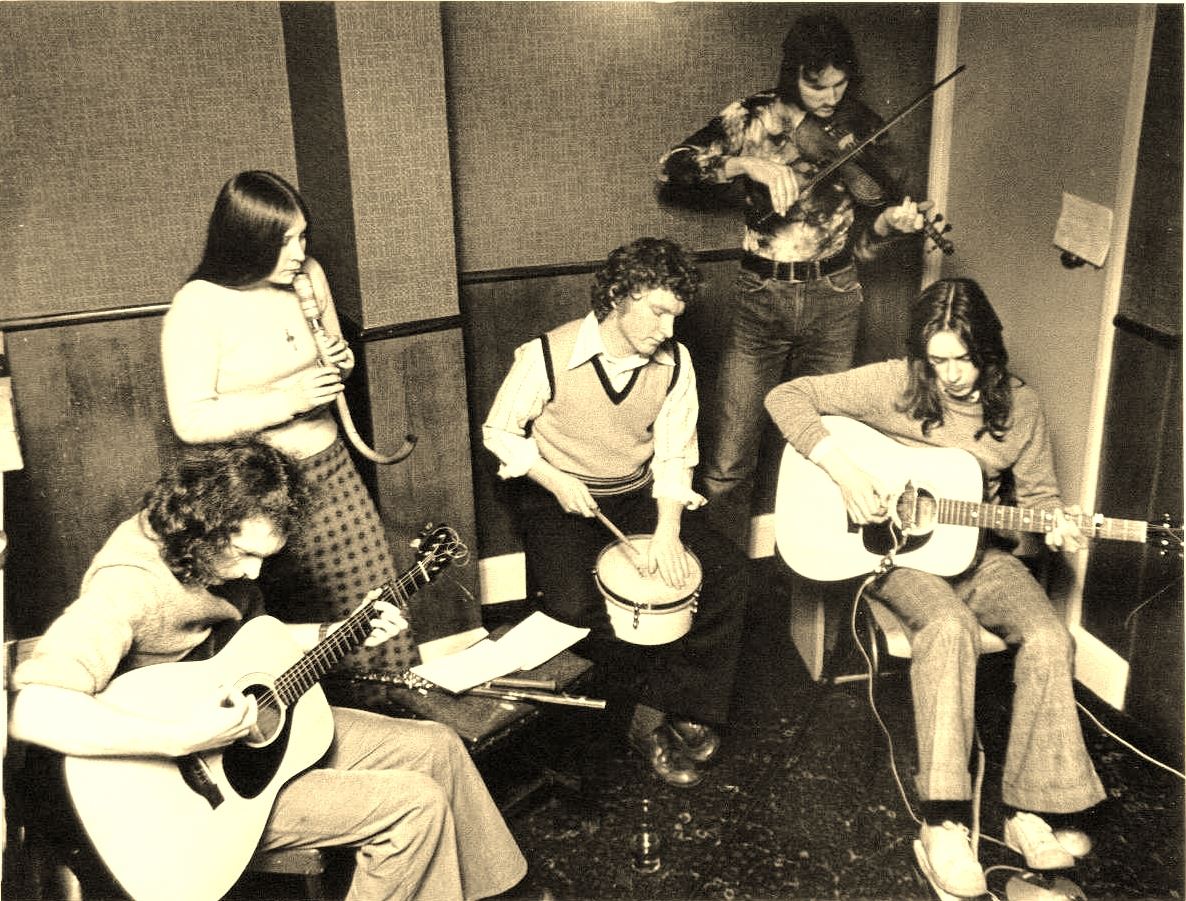
What happened next? Did you play a lot of gigs?
We played a tremendous number of gigs at that time, mostly in East Anglia but also further afield in England. We played everywhere from tiny backrooms in pubs to relatively large rock venues like West Runton Pavilion. Although we might have hoped to make a living from it, we were only ever what you might call semi-professional.
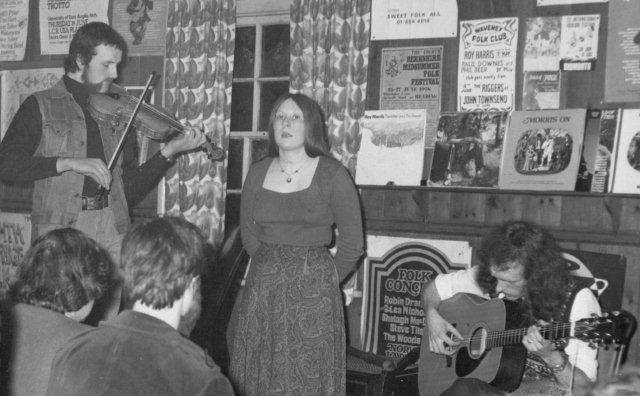
What happened after the band stopped?
When Paul and Mick left for university and art college respectively, Dave, Joan and I continued as a trio, becoming more acoustic and traditional in our approach. At one point, we did a summer season in a local hostelry, where the manager insisted on marketing us as a long-lost traditional Norfolk village band – so that’s where the ‘Village Band’ name came from. Obviously, we continued with other gigs as well, so again it was a very busy time for us as performers. Then Dave was about to go to work in Botswana for a spell, so we taped one of our performances in a local church, just to have a record of ourselves really. Fortunately, we still had the tape when Kissing Spell reissued the original album. They asked what other material we had, and decided to put it out as a separate album.
Joan and I carried on playing as a duo, with Dave rejoining us briefly between his returning from Botswana and then getting married and emigrating to Australia. In the early nineteen-eighties we became engaged in a slightly more serious venture with early music, including playing for mediaeval banquets at another local hostelry.
Around 1985 you got back together under the name of The Village Band, then Arkenstone, but soon reverting to Stone Angel.
Yes, in 1985 we formed a new band with bassist Michael Wakelin and keyboard player Dave Felmingham, occasionally being joined on vocals by Carole Irwin. Reflecting the band’s ‘middle earth’ tendencies, the name ‘Arkenstone’ was chosen, but after the second gig – a local version of Live Aid – so many former fans still referred to us as Stone Angel, that we decided to revert to the old title. However, work commitments away from the area meant the band was relatively short-lived.
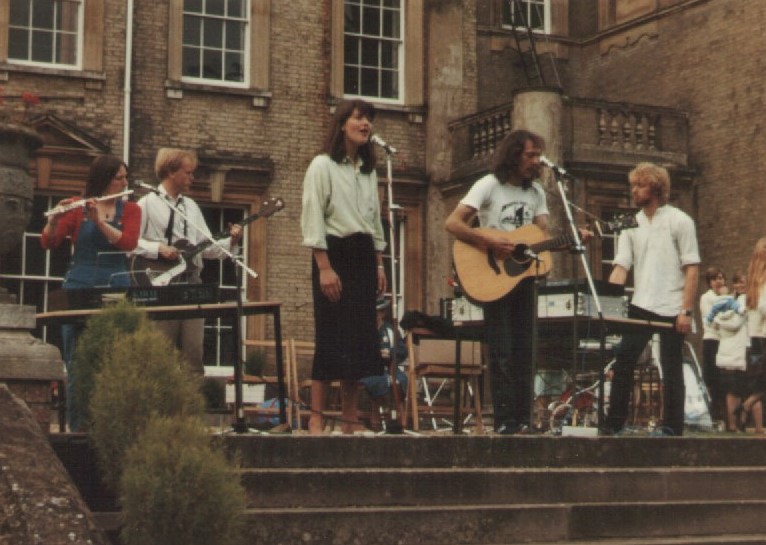
The next stage was to see a musical involvement with Broadlands Theatre Group, which entailed the composition and performance of original material for various productions. Around the same time, an article had appeared in the magazine ‘Record Collector’ with details of various privately released albums from the seventies, including the original Stone Angel LP. This was subsequently re-released on CD by Kissing Spell in 1994, alongside the previously unissued ‘ live’ recording (‘The Holy Rood of Bromholm’) and the earlier Midwinter album. All of this led to a renewed interest in the band, not only in the UK but also, to our great surprise, in Europe and the Far East.
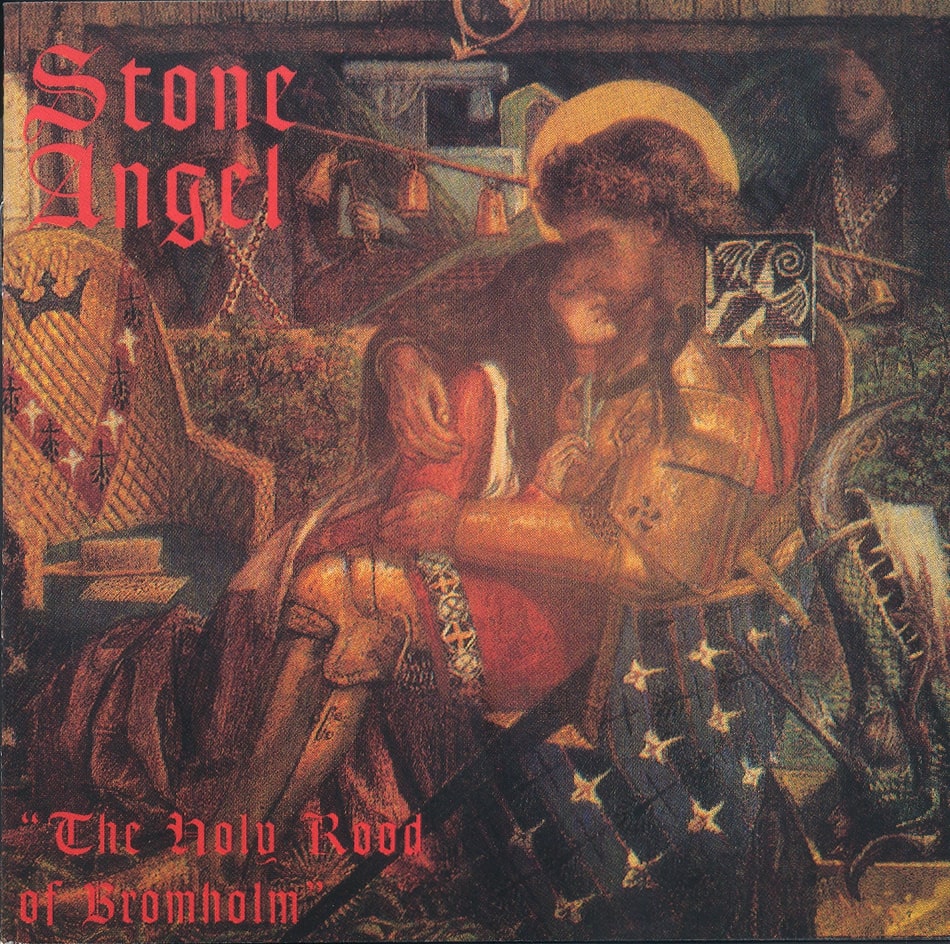
You also recorded some new material with a bit modified lineup. ‘Between the Water and the Sky’ is your latest release.
During the period spent working with the theatre group we were frequently joined by other musicians, including Dave Felmingham, who had now returned to the area. He also brought in guitarist Andrew Smith, who was playing alongside him in a local rock band at the time. Among others involved then was another old friend, who lived in our same village, Geoff Hurrell.
Joan and I had also spent time researching local traditional folk songs and working out some basic arrangements. When the opportunity arrived to record some of this material, we decided to record some of the songs from the mid-eighties incarnation as well. To that end, the recording line-up consisted of Dave, Andrew, a recalled Michael Wakelin, plus Joan and me. Richard Danby also came along to play oboe on a couple of tracks.
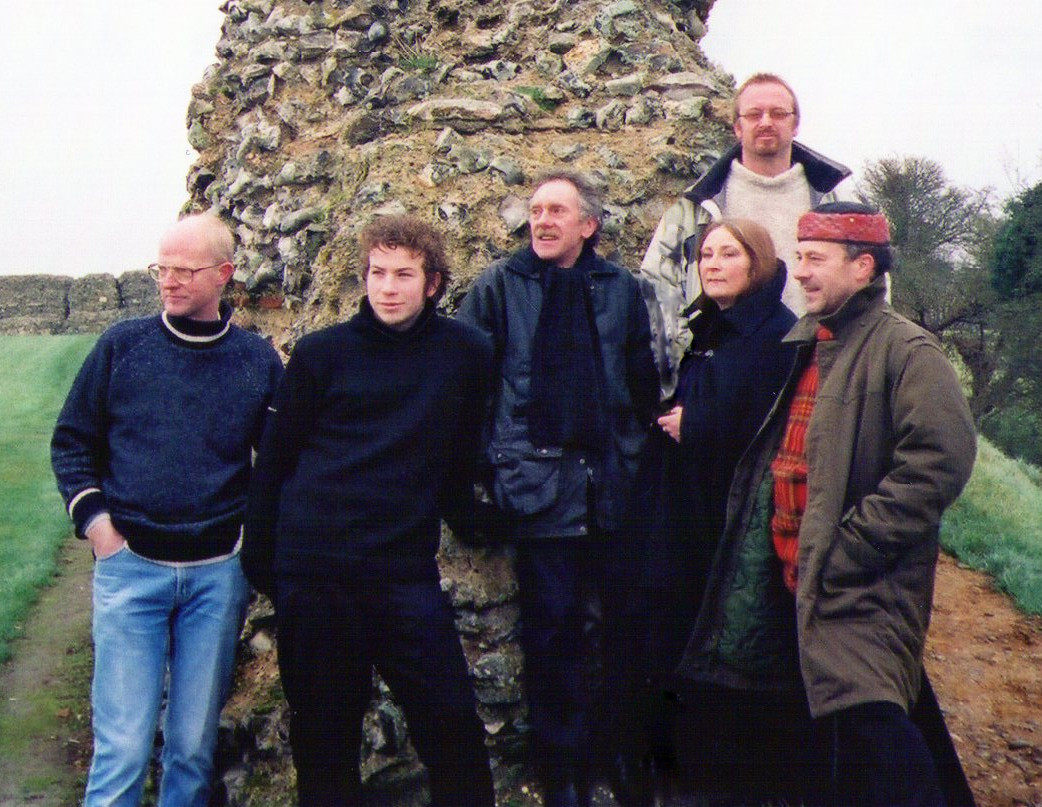
The intention was to record the songs and maybe just get a few CDs produced as a memento for ourselves, and for family and friends. Two things then happened almost simultaneously. Firstly, on hearing about the project, our friends who ran the Waveney Folk Club in Lowestoft asked if we might like to play a gig for them there. Then, the company Kissing Spell was just changing hands and the new owners got in touch regarding future arrangements with them. In the course of the conversation, they told me they’d heard we’d just done some recording and asked if they could hear the results. Within a couple of weeks, they offered us a contract to release the album on CD themselves. This was ‘East of the Sun’, issued in 2000.
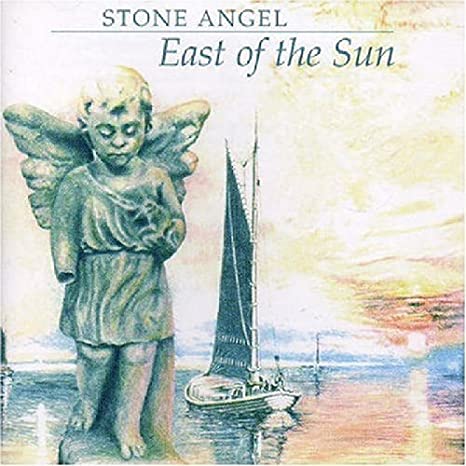
This really put a whole new complexion on things, especially as the gig at the Waveney also went down very well. Richard became a permanent member of the band, but Michael had to return to his work elsewhere in the country, so Rob Futter joined us on bass for a short time, as we began to get more bookings.
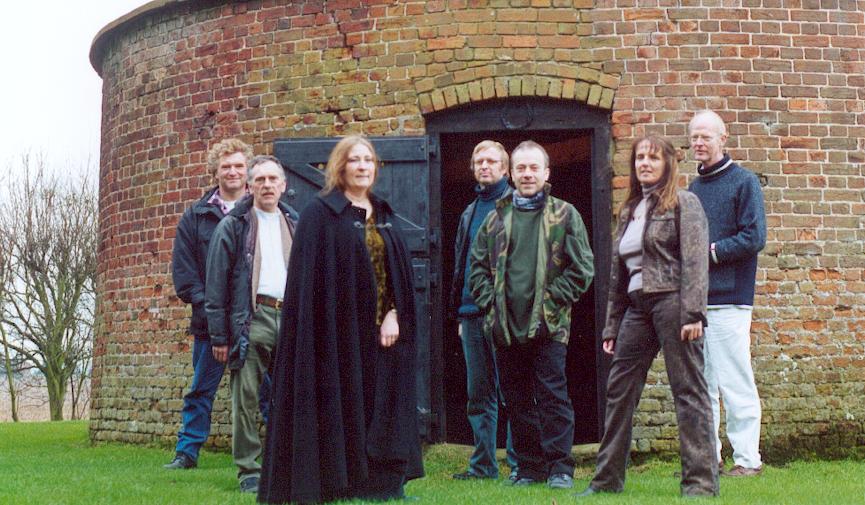
This renewed enthusiasm inspired us to research and write more new material, and plans were made to record another album. By that stage, Mick Burroughes had rejoined us, taking over from Rob Futter on bass, and Jane Denny came in to add extra vocals and percussion. The resulting album, ‘Lonely Waters’, was released in 2004.
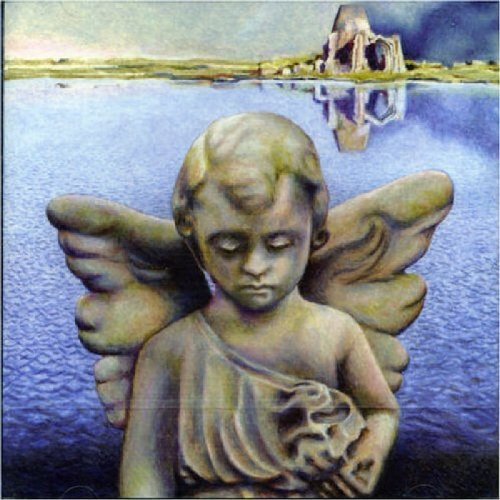
It followed a similar pattern, insofar as the tracks were largely a mix of our arrangements of local traditional folk songs and our own compositions, but also included a fifteenth century hymn in praise of ivy and a song with lyrics from the fourteenth century by Geoffrey Chaucer. Interesting too, that it contained a Norwegian dance tune called ‘P.A.Olsen’s Halling’. Joan and I became increasingly interested in Scandinavian folk music, following a visit to Norway and developing friendships there. That particular track also ended up having all five of the original Stone Angel members playing on it. Paul Corrick came up and joined us at the studio for the weekend, but Dave Lambert was still in Australia. He simply recorded his violin parts there separately, and, by what was then the wonder of modern technology, they were sent digitally and added to the final mix.
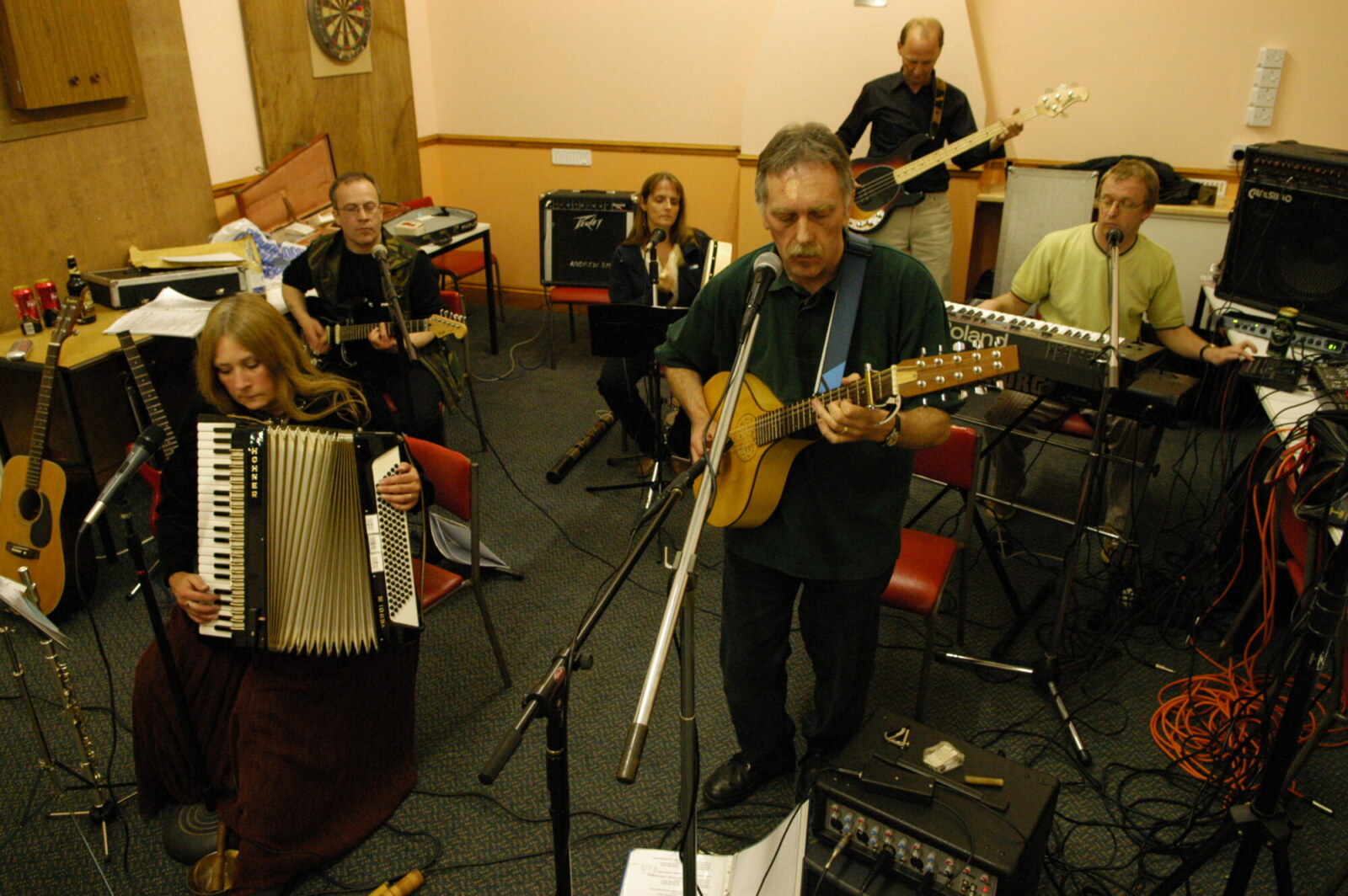
However, it was also to be marked by tragedy – we had barely finished the recording and hadn’t even begun the mixing, when Richard died in tragic circumstances. This really shocked the band, as there had been no indication to the rest of us of such a possibility. After much discussion, we decided that it would feel impossible to replace Richard, but we did dedicate that album to his memory. Before the album was released, Mick left due to pressure of other commitments, and was replaced on bass by our old friend Geoff Hurrell.
We were given fresh impetus by linking up again with our friends at Broadlands Theatre Group. Having worked with them in the past, a discussion amidst the flowing wine at a party somewhere between Christmas and New Year saw us agreeing to do the music for a joint project – a community theatre venture around the theme of the Green Man, a “pageant of ancient mysteries”!
As it turned out, Stone Angel wrote or arranged all the music and performed it live within the context of the play. All in all, it was a great experience, and the idea of an album based on the music was an obvious step. However, it was almost a year after the performances before we managed to return to the studio, and almost exactly two years before the album ‘Circle of Leaves’ was finally launched in 2007.
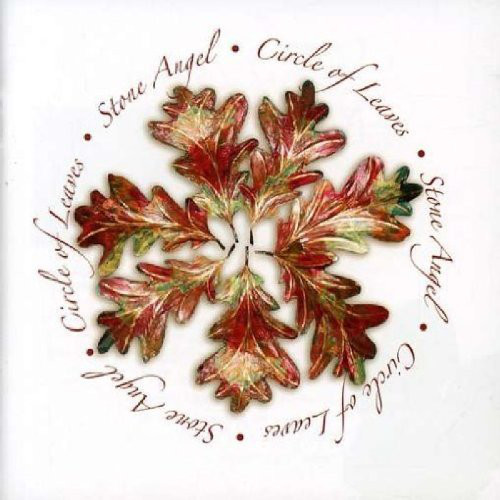
One of the most memorable bits of the recording occurred when we reassembled virtually the entire cast, who had joined in with singing the final choruses of ‘The Promise’ ( the final track), to record them against a backing track in the lovely little church at Mautby (in Norfolk). It was quite moving for all concerned, and we hope something of that magic comes through to all who listen to the album.
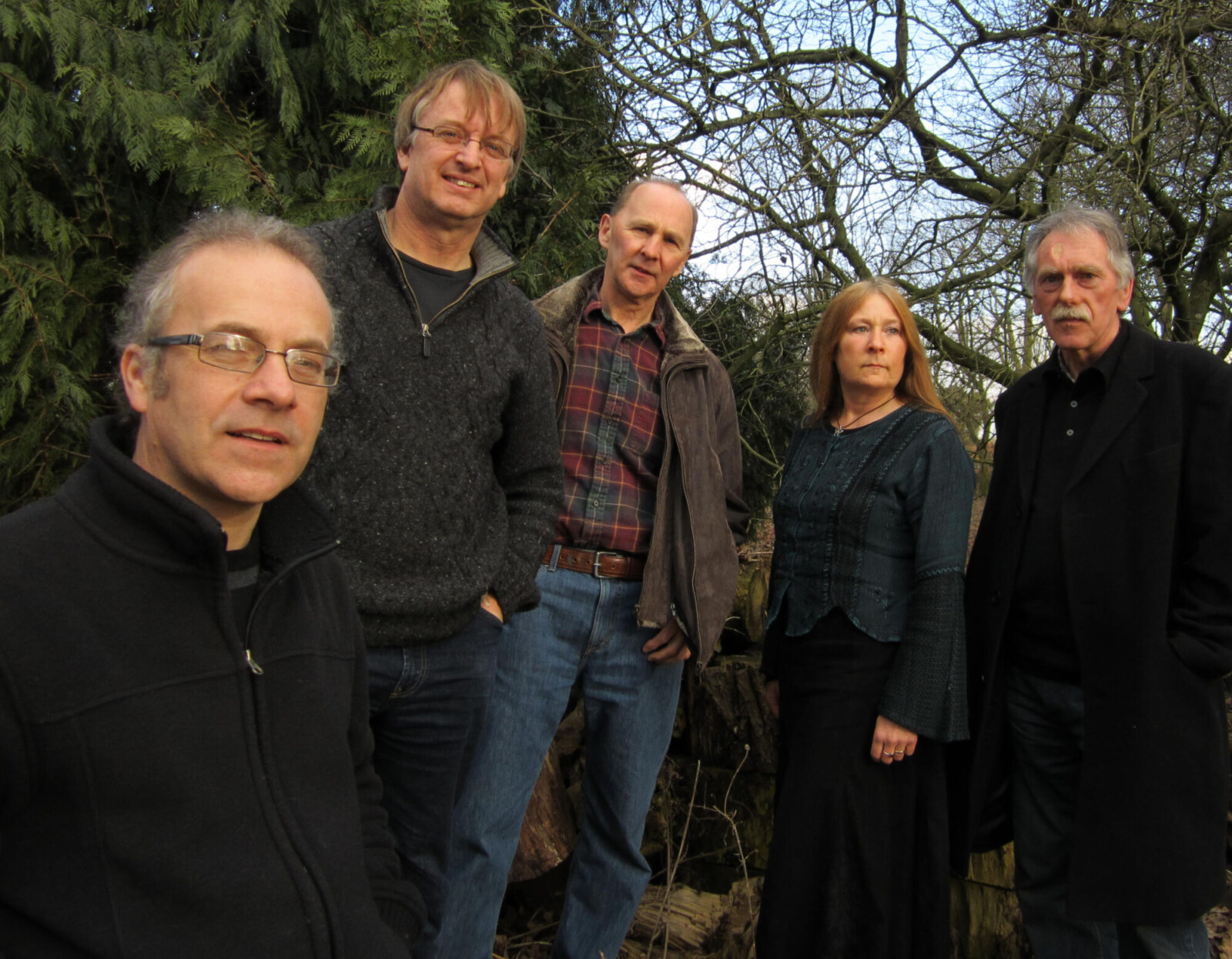
November 2009 saw Stone Angel celebrate their 35th anniversary with a concert at the Assembly House in Norwich. It was good to see fans and friends, old and new, from around the country – and indeed, the world – gather for this landmark occasion. Since then, Jane has departed for work and family reasons, leaving the remaining five-piece ensemble to record and release our most recent album ‘Between the Water and the Sky’ in 2013. In 2014, the band celebrated their 40th anniversary with a short tour and another concert at the Assembly House in Norwich. Following this, in 2015, we marked the 40th anniversary of the release of the original Stone Angel album, recorded in February 1975.
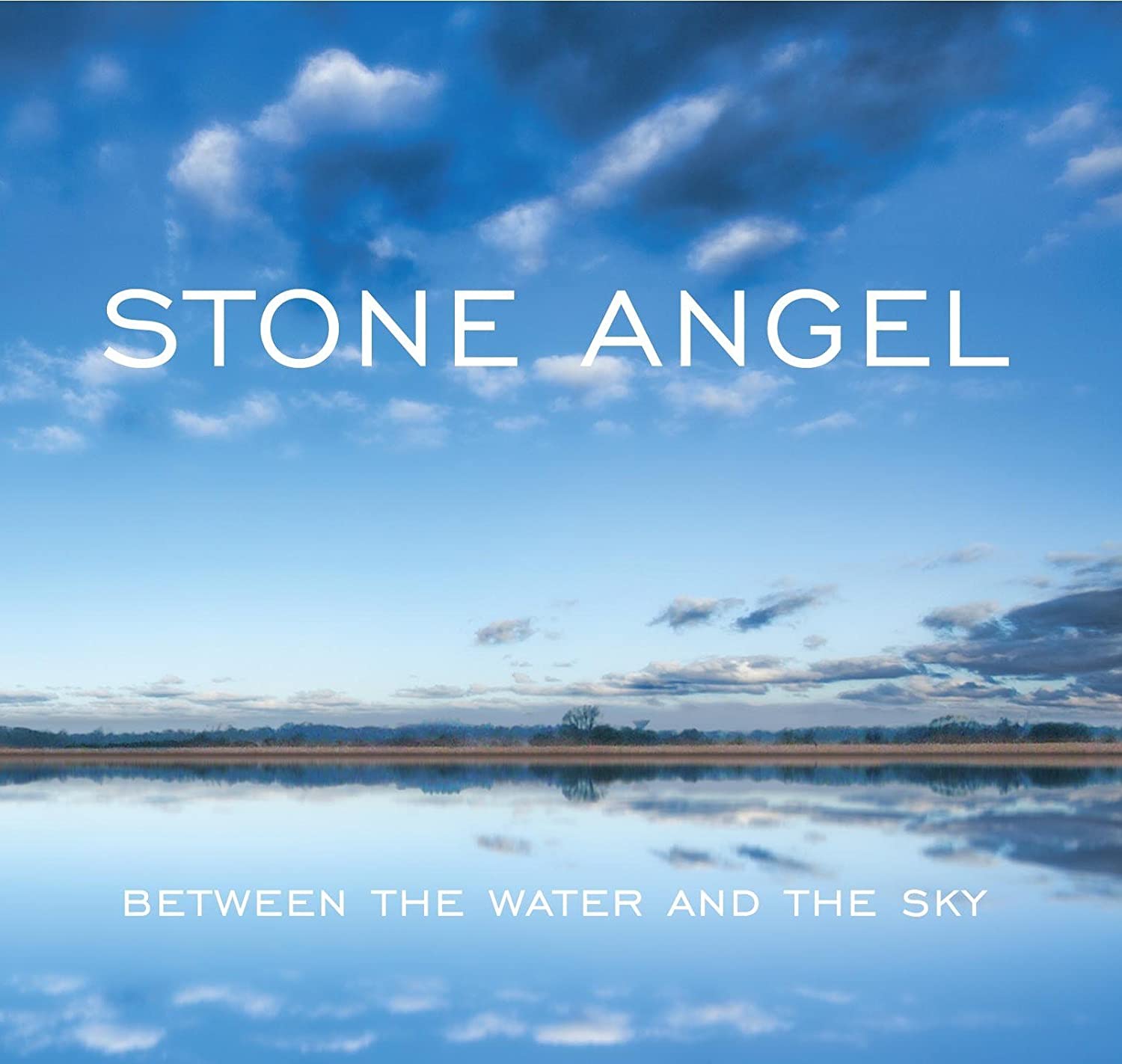
How do you usually approach songwriting? Which songs are you most proud of?
I think it can be quite variable. Sometimes I feel inspired by a theme or story and deliberately set out to write something, but at other times things just develop as I’m doodling on the guitar or ideas merely spring to mind. I find that I usually get some phrase or hook that work together, and then things progress from there. Normally I find I finish working on the melody and basic chord structure, and then spend more time completing the writing and refining of the words later. On some occasions I’ve still been completing lyrics when we are in the studio and actually recording the song! Equally, there have been times when the entire song has just kind of happened immediately.
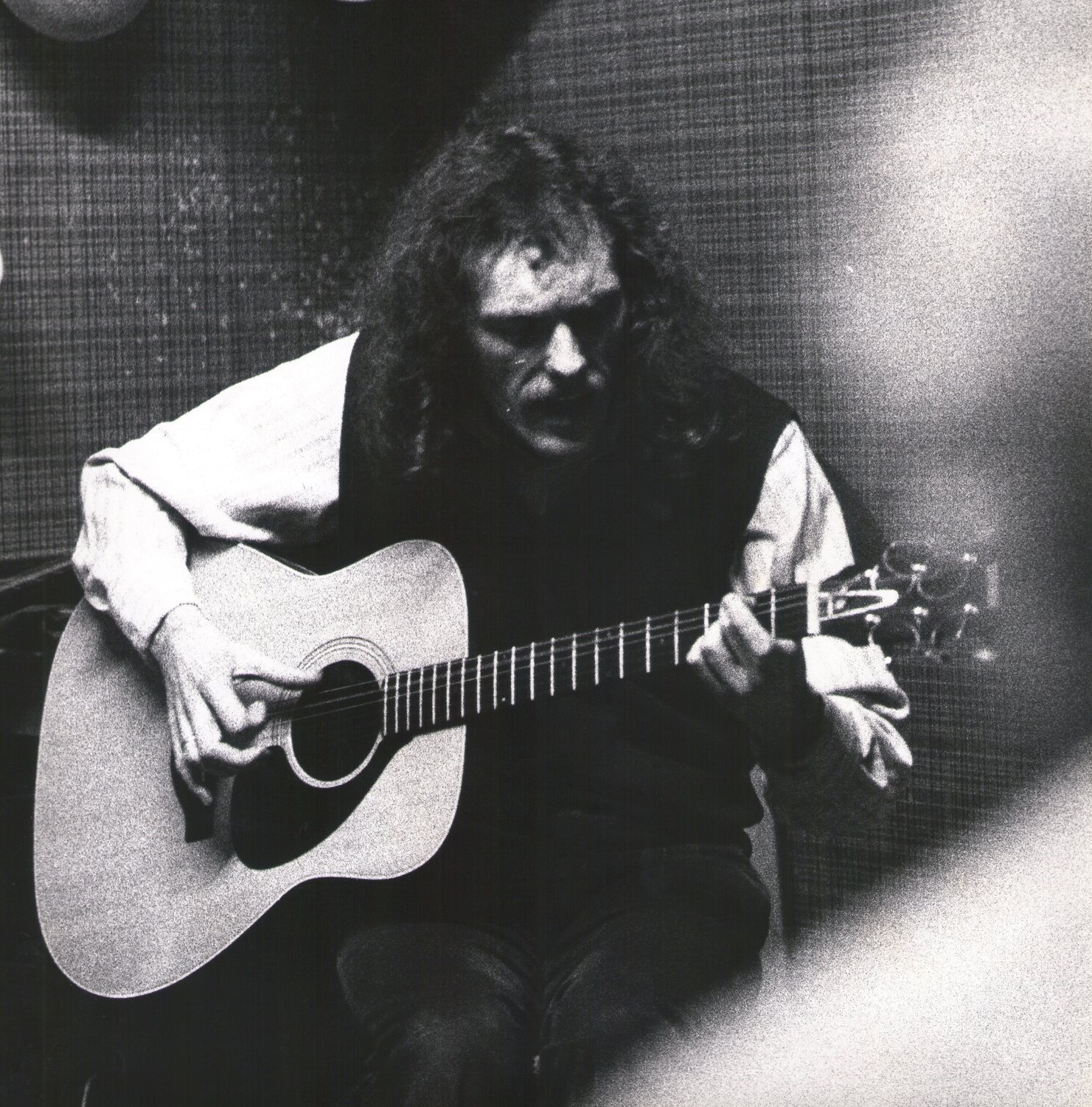
I suppose I’m quite proud of all my songs – in the sense that one has created something that didn’t exist before, but I would find it difficult to quantify beyond that. With hindsight, it would be fair to say that some probably work better than others, but I guess the hope is that other people enjoy hearing them. I haven’t really answered the question!
Looking back, what was the highlight of your time in the band? Where and when was your most memorable gig?
I find those very difficult questions to answer! The gigs that we have played over the years have been so varied, especially with lots of different kinds of venues. It has all been an adventure, really. I suppose that the 35th anniversary concert was quite an emotional occasion, with fans coming from all over the country – and from other parts of the world too! I just don’t think we were anticipating such a level of interest and support. Everyone was so friendly, it felt more like a grand family get-together.
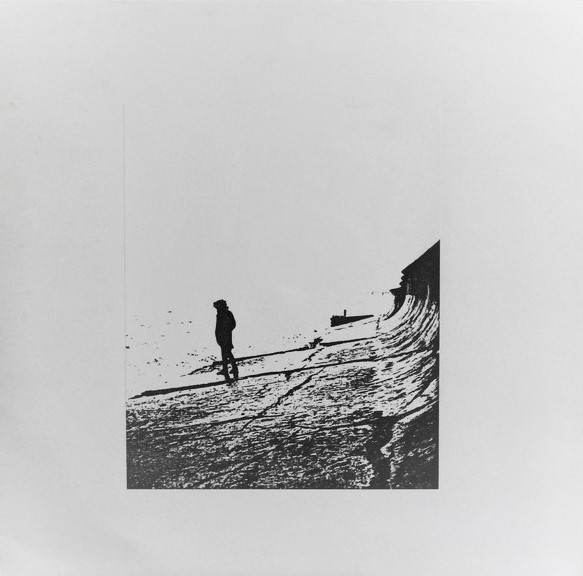
Is there any unreleased material?
There isn’t any unreleased early material that I’m aware of – unless anyone has any bootleg tapes! Record Collector magazine issued limited edition vinyl LPs of my early solo stuff (‘Seashells’ and ‘Songs for a Rainy Day’) relatively recently. I hope to record some of my other early solo material which came after them, songs that I was performing before Midwinter came into existence.
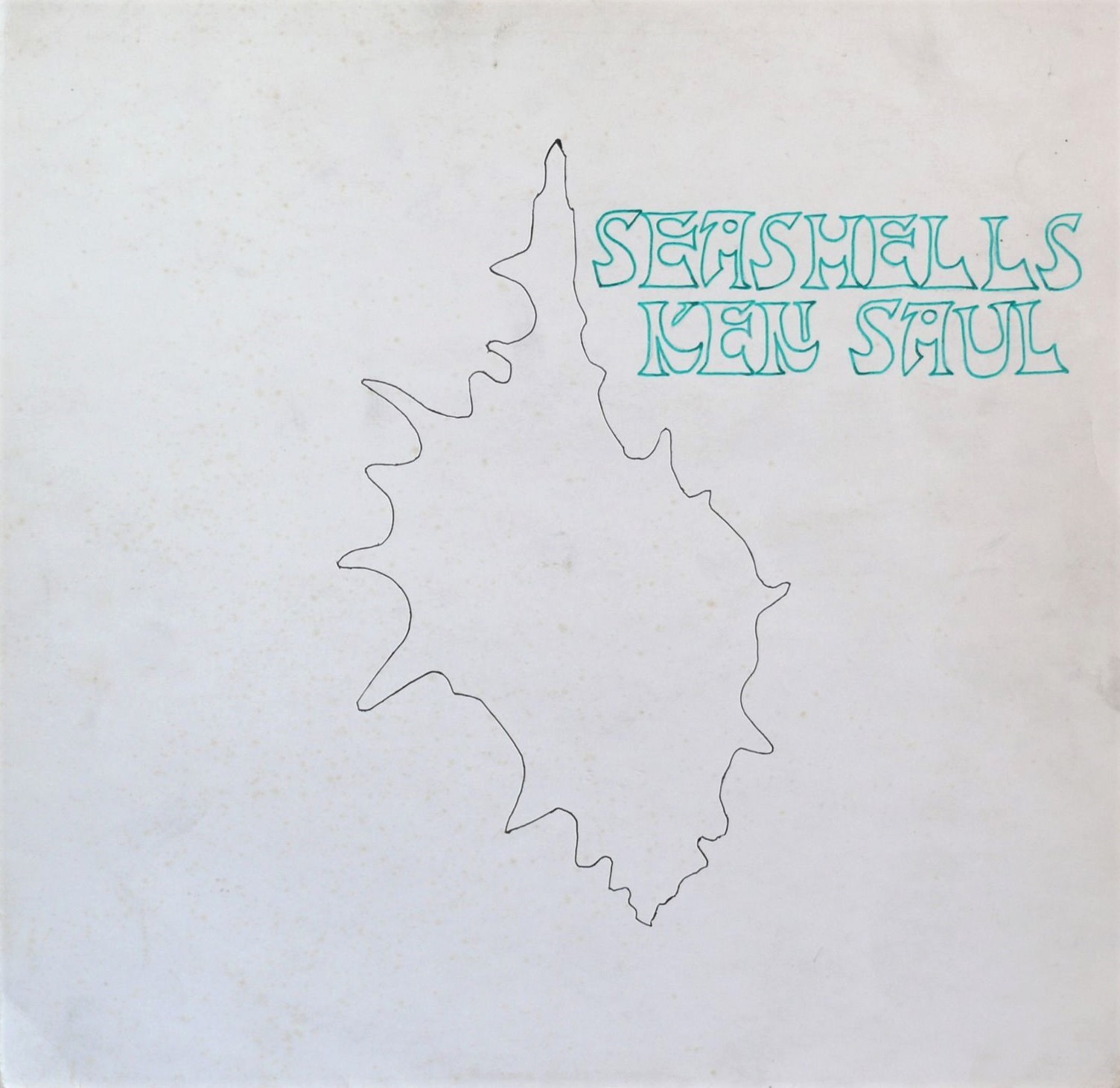
The other major unreleased material (at the time of writing) is the new Stone Angel album, ‘Wake’. It’s all recorded, but due to the covid restrictions, we haven’t been able to get back into the studio to complete the mixing and other production. The plan had been to release it in 2020 to mark the 45th anniversary of the release of the original Stone Angel album. It will be out there eventually, but who knows when?
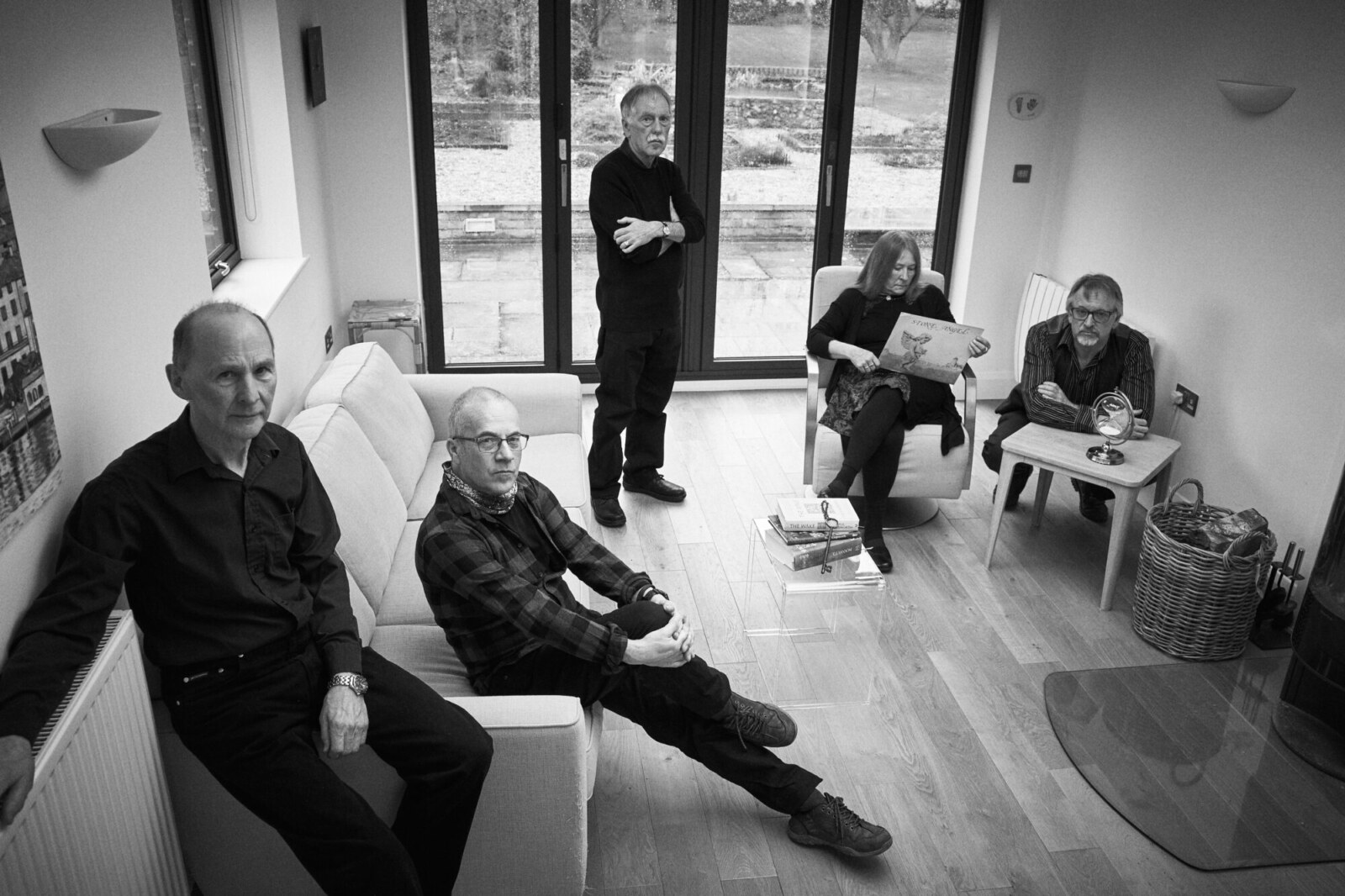
Thank you for taking your time. Last word is yours.
First of all, I would like to thank you for giving me the opportunity to do this interview. I think we have been both bemused and humbled by all the interest and support we have received in recent years, especially for our early albums. It has also been fascinating to discover that many people who now know about those recordings from the nineteen-seventies, have no idea that we are still recording and performing now. So, thank you to all fans, old and new! Ken Saul
Klemen Breznikar
Stone Angel Official Website / Facebook

